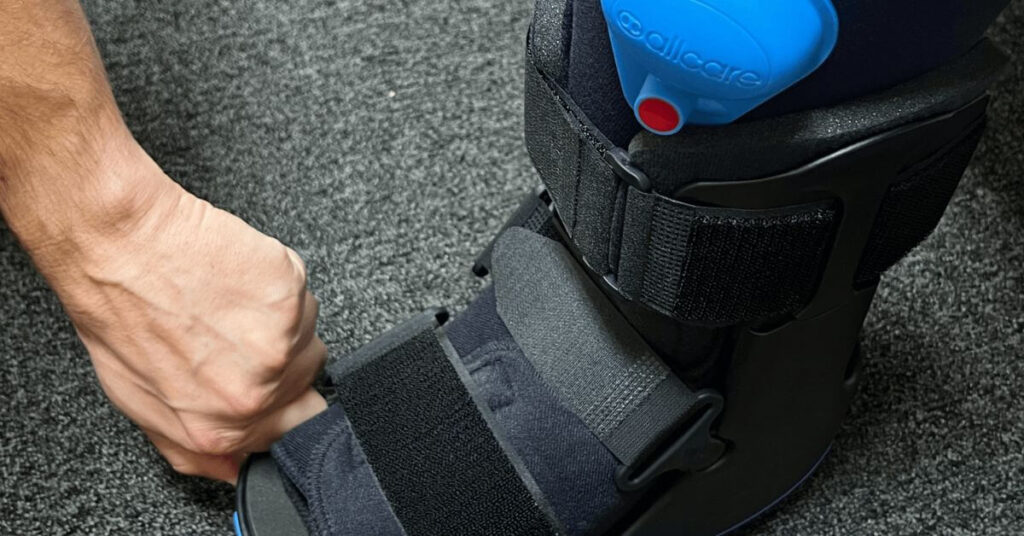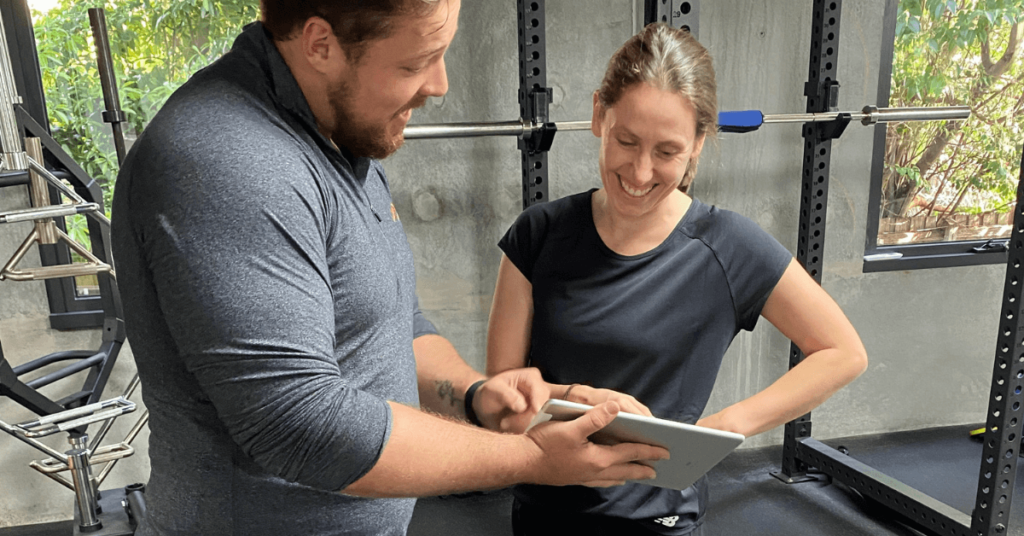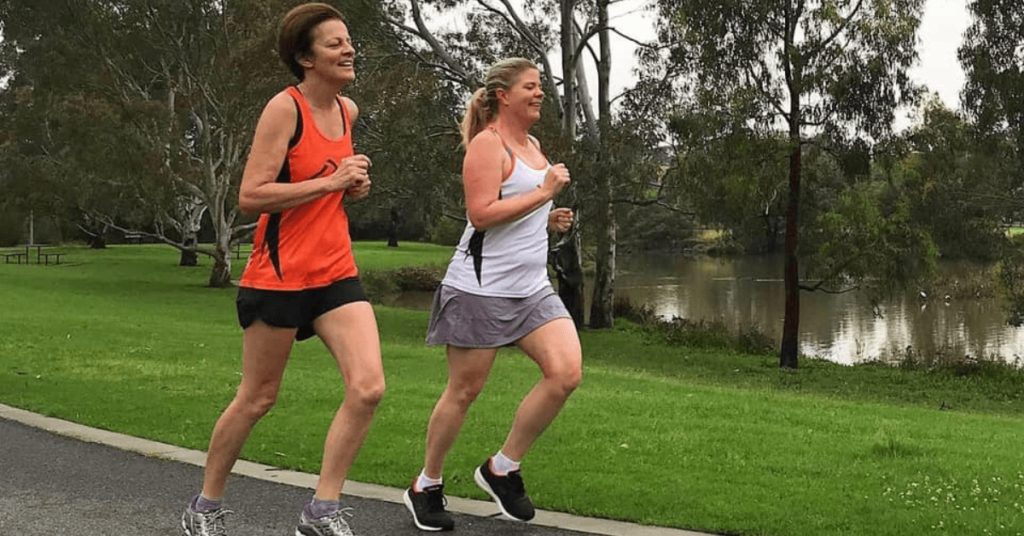Runners Beware! 4 Sneaky Foot Injuries Runners Commonly Face (and How to Stomp Them Out)
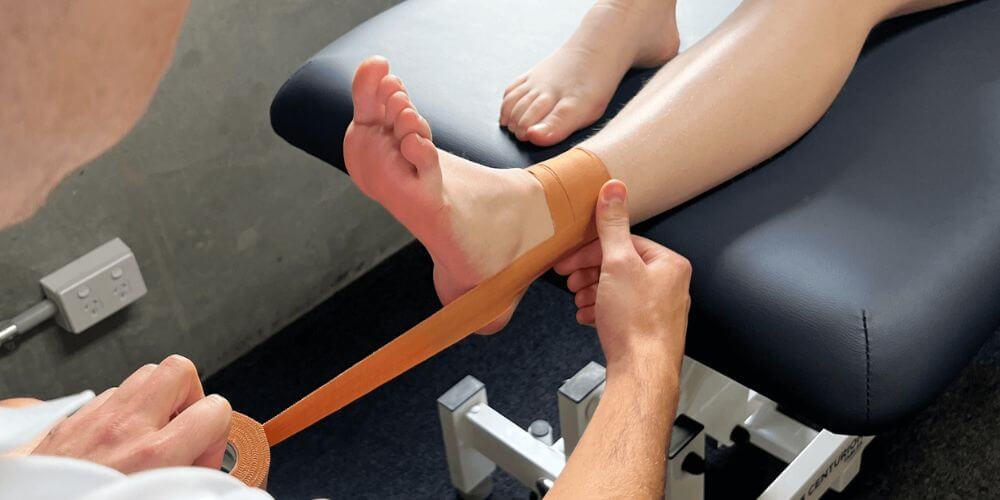
If you’ve ever felt a niggling pain in your feet when pounding the pavement, you’re not alone. Harvard‘s findings indicate that an alarming 30–75% of individuals engaged in running are likely to experience a running-related injury annually. This statistic underscores the prevalence and significance of injuries within the running community, emphasising the importance of injury prevention strategies and attentive care in the pursuit of a sustainable and healthy running routine. These “silent saboteurs” can sneak up undetected, gradually damaging your foot strike, stamina, and long-term running goals before you even notice. As a veteran sports physiotherapist in Melbourne who has treated thousands of foot issues, I think of these sneaky pains as thieves, stealing your progress in secret, robbing you of your enjoyment in running, and the chance to chase new records or distances. In this blog, I want to help you recognise the 4 most common culprits, understand why they strike so stealthily, and give you simple tips to outsmart them for good.
From plantar fasciitis to stress fractures, achilles tendinitis to sesamoiditis, I’ll shine a spotlight on what I call running’s “sneaky 4.” I’ll explain the warning signs, debunk myths, and share my insider strategies for prevention and healing. I aim to help you reclaim lost progress and confidence by outsmarting the sneaky four. Let’s start recognising and defeating these stealthy stride stealers before they can sabotage your fitness again! Together, we’ll keep you running pain-free and achieving new heights.
My feet ache after every run, especially my heels and arches. Is this normal?
Too right, foot pain after pounding the pavement is an absolute nuisance and as common as flies at a Barbie. But it’s not normal. It doesn’t mean that, while it’s normal, you should just ignore it. Pain during or after a run means something is up. From my decades of patching up joggers, recreational runners, athletics teams, and marathon runners, I can tell you those niggling heels and arch aches are usually signs of an overuse injury lurking.
Take plantar fasciitis, which causes stabbing foot pain under the heel. After seeing thousands of cases in my clinic from middle-distance fanatics, I can tell you it happens when the band of tissue running along the bottom of your foot gets overloaded. Repeated tightening through each stride irritates the fascia until it grows a tad too angry and inflamed. It’s the running injury equivalent of getting the crankies! The same goes for posterior tibial tendon dysfunction, which causes gruelling pain along the inner arch. It’s the tendon’s way of waving a white flag, surrendering to going over your normal running mileage. If you let it be and continue running, you’ll most likely end up losing spring in your step from your fallen arches. There is absolutely no fun there!
But, wait, there’s good news! (With sports physio, there always is!) The good news is that these sneaky stride stealers are treatable if detected early. With some TLC for your tortured tissue, modified training, proper running shoes, orthotics, and my running injury rehab know-how, we can have you back running comfortably and optimally again.
I’m training for a marathon, but I’ve noticed a sharp pain on the top of my foot near my toes. Should I push through it?
Listen, I get it. You’re pumped, the big day’s coming, and quitting isn’t part of your A-game. But that pain? It could be anything from pesky extensor tendonitis to a sneaky stress fracture, or even that pesky Morton’s neuroma, a nerve monster no runner wants to go through with. No amount of taping or gritted teeth can get you to the finish line uninjured. Sharp pains on the upper part of your foot are signs that you should press that pause button and listen to your body. Ignoring them is similar to asking for more trouble! Your extensor tendons also deserve proper TLC and ample rest if you don’t want to blow your engine too early! Otherwise, you’re opening the door to a nasty case of dorsal foot tendonitis or even worse, a stress fracture to your metatarsal bones.
My expert advice?
Drop the hero act and rest your foot! Ice, compression, and elevation are your three best mates for reducing inflammation and pain. Anti-inflammatories like ibuprofen can be good for temporary pain relief, but don’t rely on them for long; they’ve got their side effects and can slow down healing. If even after taking a couple of days off from running and intense physical activities, the pain persists, worsens, or ends up in bruising or swelling, get ready to dial the phone and contact your medical practitioner. X-rays, bone scans, and MRIs might be on the agenda, but we’ll help diagnose the real culprit behind your lingering pain. Orthotics, injections, or even surgery could be on the cards, depending on the severity of your injury. Consulting a doctor and sports physiotherapist is your best bet because we can map out a pain management plan and rehabilitation program to treat injured tendons and protect your bones. It could mean pausing the play button on your plans to run a marathon and swapping that for low-impact training. If imaging confirms an inflamed tendon, we start sports rehabilitation—protective strapping, anti-inflammatory medications, modified training, and even Foot Mobility Exercises (FME) to increase flexibility and strength. Ignoring even the tiniest foot pain can increase the risk of ending your running career. Never compromise your foot’s health to cross the finish line!
Running in new shoes gave me blisters and arch pain. Can it be my shoes, or did I just overdo it?
We’ve all been there: lace up those shiny new kicks, hit the pavement, and suddenly, your feet feel like they’ve been tangoing with a cactus. Blisters and arch pain are the dreaded duo that can turn even the most enthusiastic run into a hobblefest. So, what’s the culprit? Those flashy new running shoes, or a case of running mileage excess? It could be both. But don’t panic! Some arch agony and painful blisters are standard teething troubles when christening new running shoes. Even minor tweaks in cushioning and support from your old pair can make your feet furiously adapt.
Picture this: after decades of tooling around in a sturdy sedan, you suddenly switch to a brand-new featherweight sports car. Even with an expert handling the transition, bumping up your mileage or speed too quickly risks redlining the engine—or, in your case, redlining those heels and arches.
Why your running shoes can cause you trouble:
- The shoe doesn’t fit right. I know you’ve had that moment where you’ve seen your dream pair of running shoes, but they aren’t available in your shoe size. You’ve been waiting to buy your dream shoes for the longest time, so you settle for a pair that’s one size bigger or smaller, thinking that you could just make it work. Shoes that are too tight or loose rub your feet raw, creating an unwelcomed blister party. And if the arch support isn’t your friend, it can throw your biomechanics out of whack, leading to arch pain that can put a long pause on your running streak. Remember, even a slight difference in how your foot lands can have a big impact on foot wellness and your running performance.
- Break-in wanted. Whatever shoe you buy, all shoes are stiff as a tree. They need time to loosen up and adapt to your stride. In short, every new pair of running shoes needs to be broken in before you can run comfortably. Hitting the long runs straight out of the box is like asking a newbie to tackle the Kokoda Track in thongs. Ease into them with shorter distances first, let the materials soften up, and your feet will thank you!
- Style changes can hurt. I had a client, Sam, who wanted to start jogging for his health. When I started to interview him about his previous running history, he said he just took long walks using his trusty chunky trail shoes and told me he never owned a pair of proper running shoes in his entire life! Jumping from chunky trail shoes to minimalist racers is like asking your feet to do ballet in footy boots. Sudden changes in drop, cushioning, and support can throw your muscles and tendons into disarray, inviting injuries like stress fractures and Achilles tendon troubles. This is why, when I asked him to buy a proper pair of running shoes, I told him to take it slow, transition gradually, and listen to his body.
Expert tips for breaking in your running shoes
- Go slow, not hard: Don’t marathon it straight out of the box! Start with short walks around the house, maybe a quick jaunt around the block. Let the shoes soften up to your feet shape, and don’t be impatient.
- Thick socks are your friend: Breaking your new running shoes by wearing thick socks is a blessing in disguise. Thick socks, acting like a bubble wrap for your feet, can easily fill out your shoes, stretch them a bit, and help prevent raw blisters from happening.
- Moisture works: Dampen the inside of your shoes with a spray bottle. This loosens the fabric further, making it more malleable and easier to break in.
- Your hairdryer works magic: You can use your trusty hairdryer to help you shape your shoe to match your feet. Put your hairdryer on low heat (just enough to warm them up and not burn them!), wear thick socks, and walk around the house. It works like a charm, all the time!
- Comfort doesn’t happen overnight: Breaking into a new pair of shoes takes time. Don’t expect to run comfortably after a couple of hours or days. It might take a couple of weeks for your shoes to fully break in and become your running buddies. Listen to your feet, take rest days, and gradually increase the distance as they get used to the new terrain and new owner.
- Take your new shoes on a ride: Don’t just use your new shoes on cold concrete pavements. Wear your shoes and test them out on different terrains.
- Winter wondershoes: Freezing your shoes may sound a bit crazy, but hey, this also works. What you can do is fill up a ziplock bag with water and place this water-filled bag in each of your shoes. Place your shoes in the freezer and let the ice do its magic. Water expands when frozen, and this can help widen your shoes and make them fit better.
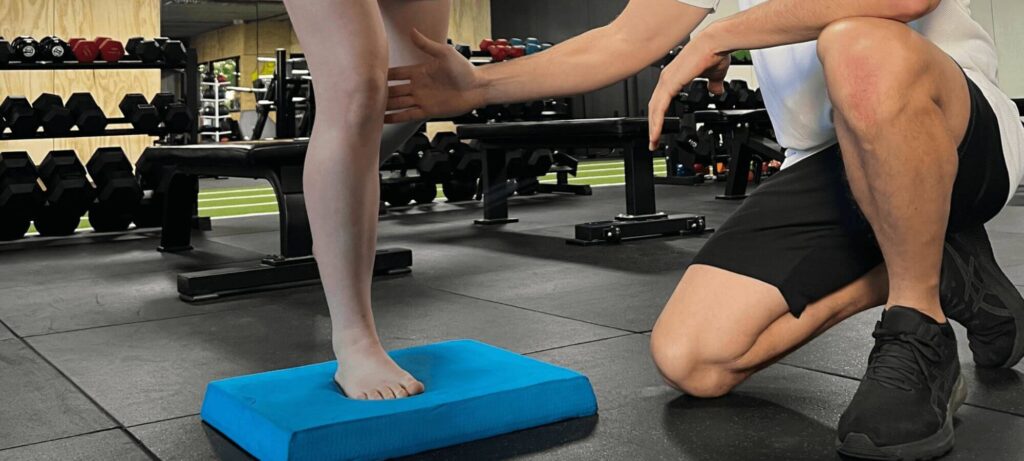
As reported by the Australian Institute of Health and Welfare, fractures constituted the primary injury in slightly over half of all sports injury hospitalisations during the 2020–21 period, accounting for 53% (or 35,100 cases). Following closely, soft-tissue injuries ranked as the second most prevalent, representing 17% of cases (or 11,100 incidents).
Beating Running’s Sneaky 4: How to Outsmart Common Foot Injuries
From our decades of patching up countless joggers, athletes, and marathoners, my team and I have dubbed plantar fasciitis, stress fractures, Achilles tendinitis, and sesamoiditis the “Sneaky””—the stealthy foot injuries behind most running grief. On the surface, they seem like minor bumps on the road, but these sneaky injuries can sideline even the best runners if left unchecked. In this section, we’ll equip you with the information to recognise these injuries early, understand why they strike on the sly, and give you a simple guide to finally beat them for good. Consider it your insider’s guide to outsmarting running’s most common foot injury troublemakers!
| Injury | Pain Location | Cause | Prevention Tips | Treatment |
|---|---|---|---|---|
| Plantar Fasciitis | The heel and bottom of the foot | Inflamed plantar fascia (tissue under foot) | Supportive shoes, stretching, rest, proper training | Physiotherapy, ice, compression, anti-inflammatory drugs |
| Stress Fractures | Foot and lower leg bones | Overuse or repetitive stress | Gradual training increase, bone strengthening exercises, good nutrition, proper footwear | Rest, activity modification, crutches/boot/cast, ice, compression, anti-inflammatory drugs, surgery (rare) |
| Sesamoiditis | Ball of the foot, near the big toe | Inflamed sesamoid bones and tendons | Wide-toe box shoes, stretching, low-impact activities, good footwear | Physiotherapy, ice, compression, activity modification |
| Achilles Tendinitis | Back of leg, near heel | Overuse or tight calf muscles | Warming up, strengthening exercises, good flexibility, and proper footwear | Rest, ice, compression, elevation, anti-inflammatory drugs, bracing or stretching, physiotherapy, and surgery (rare) |
Plantar Fasciitis
When you experience pain on the first step, it could be your plantar fascia saying hello! We had a client, Sarah, a regular marathon runner, who woke up one morning with a searing pain in her heel, like someone had stabbed her with a tiny knife. Walking felt like stepping on broken glass, but she continued to go on her days like nothing happened. After ignoring the pain for a few days, it only worsened, forcing her to visit us at Run Ready. I told her she made a great choice by consulting the experts on foot pain! Rest, ice, stretching, and supportive shoes became her new training partners, and she learned to listen to her body’s subtle messages before they turned into full-blown ouchies.
Our plantar fascia is a shock-absorbing tissue that runs along the bottom of your foot, keeping arches taut. Repeated pounding fatigues it until inflammation strikes – AKA plantar fasciitis. While most runners associate it with normal heel pain after resting, you can experience arch and midfoot soreness if the irritation spreads. If you get suspicious of this heel pain, make your move quickly because if it’s left untreated a simple inflammation of your plantar fascia can leave you doubling in pain and get worse. The causes of plantar fasciitis can range from overusing the tissue or increasing intensity too quickly. If you have rigid arches, use worn-out shoes, run on hard terrain, and run with too much weight, it can put extra pressure on your plantar fascia. Some of the ways we can help runners with their PF are by using custom orthotics, wearing the right shoes, doing calf and foot stretches, mobilising tissue gently, and modifying training as needed.
Stress Fractures
Stress fractures can go unnoticed for a long time. If you’ve ever felt a vague and dull pain on your foot, but can’t pinpoint exactly where it hurts, a stress fracture could be the silent culprit. Continuing to dismiss this pain as an after-run pain can break your bones and end up in a complete fracture! These tiny cracks in our metatarsals result from accumulated impact over time. When you increase your running load more than you can handle and if your bone structure can’t keep up, your bones bear the increased pressure leading to miniature fractures. Carefully monitoring the intensity and training load together with resistance exercises builds stronger feet. But, if we confirm that you have a fracture, we use special boots to immobilise your feet and provide you with pain management and relief from inflammation.
Sesamoiditis
Ever had a sharp, burning ache under the big toe joint? I experienced this once and it felt like my toe was going to fall off from the intense pain! Nestled beneath your big toe lie two pea-sized powerhouses, the sesamoid bones. They act like pulleys, guiding your big toe and absorbing the pressure of every step. But when these tiny titans get overworked or squished by tight shoes, they throw a temper tantrum – enter sesamoiditis. Runners who crank up sudden mileage increases tend to stress out these bones. Poor shoes lacking cushioning or support under the toe box also rub and squeeze. Flexible feet help share load but some biomechanics overload sesamoids. Special pads and taping ease friction while we strengthen toe flexors long-term. Activity modification takes full weight off the sesamoids initially too. Catching this big pain early prevents chronic sesamoiditis or stress fractures. So listen to any odd toe twinges!
Achilles Tendinitis
When you wake up in the morning, you can feel some swelling, stiffness, burning pain, redness or difficulty in movement throughout your heel. You ignore this and think, well, it’s because I haven’t exerted pressure on it the entire night. Wrong! That’s likely Achilles tendinitis brought on by repeated microtears to this tissue that connects your calf muscles to your heel bone. I had a client named, Steve, who specialised in short-distance running or sprints, who came into the clinic complaining that he was feeling heel pain after he pushed himself to train regardless of the lingering pain on his heel. I took a look at his heel and saw that it was swelling, red, and very warm to the touch! My suspicions were correct. He was already suffering from Achilles tendinitis which was eventually resolved with aggressive load management. Because his heel had been damaged, Steve gave up running short distances and switched to running middle distances to keep his tendon happy!
Repeated stress or overuse from running, jumping, or even wearing improper running shoes can cause Achilles tendinitis. When you visit us, we check for tiny calcifications called microdactyls on imaging that show your tendons crying out for help. Landing too hard, quick acceleration/deceleration, uphill running, and rigid calves all overload your Achilles over time. Sports physiotherapists like myself recommend effective treatment plans that include rest, ice, exercises, heel massages, the use of shoe inserts, and potentially orthotics. Adjusting your training load and correcting training form gradually can also allow your injured tendon to heal while you rebuild strength.
Foot Injuries of Runners FAQ
Running should be a liberating and enjoyable experience, but feeling numbness in your feet can throw a wrench in your stride. Don’t worry, it’s not always a cause for alarm, but understanding the potential culprits can help you get back on track (and feeling) fast. The common causes of numbness while running are:
- Tight or narrow shoes
- Tightly tied shoelaces
- Improper footstrike
- Foot abnormalities like a high foot arch, flat feet, etc.
- Overtraining
- Medical issues, like diabetes, etc.
Have you ever experienced suddenly feeling some pain while running but became hesitant if you should stop because you can’t differentiate between soreness or injury? Don’t worry, it’s not always a one-way ticket to injury town. Sometimes, it’s just your muscles sending you a “growth spurt” sign! But how do you tell the difference between post-workout soreness and a potential injury? Here’s a quick breakdown:
Soreness:
- Dull, achy pain
- Delayed arrival: You feel it after a workout
- Large area: The pain spreads across a large region or covers an entire muscle group.
- Feels better after a stretch or some rest
Injury:
- Sharp, intense pain: A pain that makes you stop in your tracks and makes you scream in pain
- Immediate strike: The pain strikes you mid-run or while doing a certain movement.
- Pinpoint location: The pain is centred on a specific area.
- Pain increases with every movement
If you experience continuous pain even after resting or doing some stretches, and if you feel suspicious of the pain you’re feeling, it’s always the best choice to consult your medical provider or seek the help of a sports physiotherapist like Richie Lynch here at Run Ready.
In general, runners would most likely push through the pain, but you actually shouldn’t. Feeling pain during or after your runs is your body’s red flag. That’s why you should take that red flag seriously and stop running. Pain is your body’s signal that something needs attention, and ignoring it may worsen damage and impair performance.
- Mild Ache: This dull throb usually warms up with your run and targets a large muscle group. It’s safe to push through as long as it doesn’t worsen or mess with your form. Ice and applying P.O.L.I.C.E. (Protection, Optimal Loading, Ice, Compression, Elevation) will help with pain relief.
- Sharp Pain: This one stays with you, intense but tolerable. It often targets a specific area and could signal overuse or stress. This is a sign to stop running, grab P.O.L.I.C.E., and rest. If the pain persists for more than a day, it’s time to pay a visit to your doctor.
- Severe & Sudden: Pain with this intensity requires you to stop whatever you’re doing. It could be a torn muscle or fracture and needs immediate medical attention. Pushing through will just worsen the injury and can lengthen the time you need to recover.


